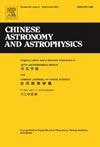不等间隔测量条件下时间传递链路数据融合方法研究
Q4 Physics and Astronomy
引用次数: 0
摘要
为了充分利用不同类型的时间传递链路,需要实现不同采样率下时间传递链路数据的融合应用。提出了一种基于多分辨率分析的数据融合方法。首先对原始数据进行小波分解,得到统一分辨率,初步消除高频噪声。随后,在各种分辨率下采用卡尔曼滤波。最后,利用Mallat快速重构算法推导融合结果。该方法用于处理中国科学院国家时间服务中心(NTSC)与德国物理技术Bundesanstalt (PTB)之间的时间传输数据。结果表明,该融合算法可以处理链路异常或中断引起的数据问题。由于GPS (Global Positioning System) PPP (Precise Point Positioning solutions)链路的实际测量结果总体上优于TWSTFT (two Satellite Time and Frequency Transfer)链路,因此使用GPS PPP链路的测量结果来评估融合算法的增益。以快速实现协调世界时(UTCr)为基准,数据融合结果的精度增益约为1%,日频率稳定增益优于20%。同时,融合算法可以抑制TWSTFT链路的周期性噪声,有效提高链路的稳定性和鲁棒性。本文章由计算机程序翻译,如有差异,请以英文原文为准。
Research on Data Fusion Method of Time Transfer Link under Unequal-interval Measurement Conditions
In order to fully utilize different types of time transfer links, it is necessary to realize the fusion application of time transfer link data under different sampling rates. This article proposes a data fusion method based on multi-resolution analysis. Firstly, we perform wavelet decomposition on the original data to achieve a unified resolution and initially eliminate high-frequency noise. Subsequently, Kalman filtering is employed across various resolutions. Ultimately, the Mallat fast reconstruction algorithm is utilized to derive the fusion result. The method is used to process time transfer data between the National Time Service Center (NTSC) of the Chinese Academy of Sciences and the Physikalisch-Technische Bundesanstalt (PTB) of Germany. The results show that the fusion algorithm can handle data problems caused by link anomalies or interruptions. Since the actual measurement results of the GPS (Global Positioning System) PPP (Precise Point Positioning solutions) link perform better than those of the TWSTFT (Two-Way Satellite Time and Frequency Transfer) link overall, the GPS PPP link measurement results are used to evaluate the gain of the fusion algorithm. Using Rapid Realization of Coordinated Universal Time (UTCr) as the reference, the accuracy gain of the data fusion result is about 1%, and the daily frequency stability gain is better than 20%. At the same time, the fusion algorithm can suppress the periodic noise of the TWSTFT link, effectively improving the stability and robustness of the link.
求助全文
通过发布文献求助,成功后即可免费获取论文全文。
去求助
来源期刊

Chinese Astronomy and Astrophysics
Physics and Astronomy-Astronomy and Astrophysics
CiteScore
0.70
自引率
0.00%
发文量
20
期刊介绍:
The vigorous growth of astronomical and astrophysical science in China led to an increase in papers on astrophysics which Acta Astronomica Sinica could no longer absorb. Translations of papers from two new journals the Chinese Journal of Space Science and Acta Astrophysica Sinica are added to the translation of Acta Astronomica Sinica to form the new journal Chinese Astronomy and Astrophysics. Chinese Astronomy and Astrophysics brings English translations of notable articles to astronomers and astrophysicists outside China.
 求助内容:
求助内容: 应助结果提醒方式:
应助结果提醒方式:


